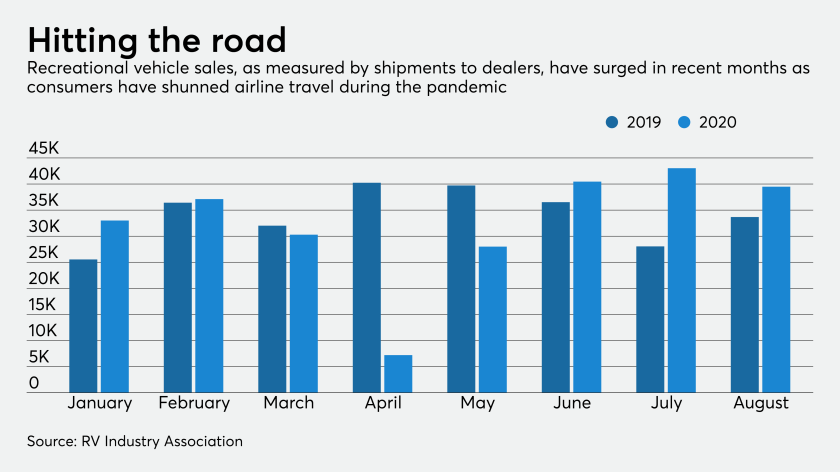Just as U.S. lawmakers are ramping up demand for a digital dollar, Facebook's Libra project is dialing back its scope.
If not for the regulatory firestorm that Facebook endured upon unveiling its Libra cryptocurrency project in June 2019, its platform would have seemed perfect for helping the U.S. government get stimulus payments to consumers — particularly given Libra's early support from major payment networks, many of which have since backed off from the project.
The latest adjustments to Facebook’s Libra strike a conciliatory tone toward central banks and governments that are navigating an uncharted mix of public health and economic strain.
Libra’s new white paper comes into a world that’s drastically different from the one that existed when Libra’s controversial original white paper dropped last summer. At the time, regulators and politicians howled about the project's potential to circumvent central bank monetary policy, calling Libra’s stated goal of financial inclusion into question.

These central banks are now in a state of emergency, engaged in quantitative easing and promising to support trillions of dollars in lending to help businesses harmed by the virus. Central banks are also moving toward emerging concepts to quickly distribute relief funds to businesses and consumers, such as central bank digital currencies and public digital wallets.
A year ago, these ideas were floated as a way governments and central banks could curtail Libra’s plans. Libra is now stating a willingness to actively participate in central bank policy. Libra’s olive branch to regulators is a system that replaces the project’s “basket” of international currencies to back Libra’s stablecoin with a more localized option to support multiple stablecoins, with each serving as a digital equivalent of that nation’s local currency.
The document discusses some considerations involving the use of specialists when auditing financial statements during the pandemic.
Many consumers are taking to the highways and the water for safe getaways during the pandemic — powering one of the few bright spots in lending. However, bankers warn that boomlets usually come with distinctive credit risks.
Conversations have already started about how the increased government expenditures to support citizens during the pandemic will be funded. But resisting the urge to increase taxes may be the best way to support economic growth.
Libra also detailed a “reserve” that will back Libra Coins. The reserve will consist of cash or cash equivalents and short-term government securities denominated in that relevant currency, which Libra contends will provide confidence for consumers and merchants to use Libra Coins to make payments and to transfer funds through P2P apps and similar services.
In its white paper, Libra promises to support government-issued digital dollars or other similar moves.
“Our hope is that as central banks develop central bank digital currencies (CBDCs), these CBDCs could be directly integrated with the Libra network, removing the need for Libra Networks to manage the associated Reserves, thus reducing credit and custody risk,” Libra said in its white paper, adding if a central bank develops a digital representation of the U.S. dollar, euro, or British pound, Libra could replace the applicable single-currency stablecoin with the CBDC.
Libra did not return a request for comment by deadline on how its changes address the coronavirus pandemic or the economic fallout. Its new white paper suggests changes and hedges to address severe economic shock in a general sense.
“We have had constructive discussions with regulators on how to handle extreme situations — in particular, how the Reserve would function in stressed scenarios and what claims and protections are in place for Libra Coin holders,” said Libra’s new white paper.
Libra has incorporated strategies in the design and structure of the Reserve that are based on approaches used in other systems. “The Reserve will hold assets with very short-term maturity, low credit risk, and high liquidity. It will also maintain a capital buffer,” the white paper said.
Over the past year, Libra has drawn negative attention that has far exceeded other blockchain-related payment projects, such as Walmart’s patent application to create digital currency accounts for shopping, or Bank of America’s patent application to build a digital wallet concept. These projects escaped heat from regulators, mostly because they were geared toward a specific use case, such as P2P transactions or security, rather than an open payment network.
“Fintechs are generally happy to start with high level principles and start quickly as a result,” said Gareth Lodge, a senior analyst at Celent. “This was shown in the initial Libra documents that weren’t, in the eyes of the banking and payments world, terribly detailed, specific or consistent. … This version of Libra seems to have taken some of that feedback on board.”
Libra’s controversy caused several high-profile members to at least temporarily leave the project, such as PayPal, the major card brands, Stripe and eBay. Libra’s partners are key because they’re investing about $10 million each in the project, and also providing expertise in managing the “nodes” that are part of the blockchain that supports the Libra network. Firms such as Mastercard and Visa would potentially give Libra more cover with regulators, for example, since credit card companies are already highly regulated.
Concerns over the regulatory heat caused some of these companies to leave the project, though Libra promised it would add more partners over time. Libra has also been hinting at a change from its original “basket of currencies” model since the fall, and has long promised it would not launch until it has regulatory support.
“I think the regulators would welcome Libra’s efforts to address their concerns and should review the new proposals in depth,” said Zil Bareisis, a senior analyst at Celent, adding that the multicurrency approach "helps address some of the concerns around ability to manage monetary policies, [but] it potentially reintroduces friction for cross-border transactions.”
It’s also unclear how Libra would fit with central bank digital currencies, Bareisis said, adding Libra’s impact could be challenged by a change in its blockchain posture. Libra originally planned to let anyone participate in its network, and has changed to a yet-to-be determined approval process. “Can the original vision and goals be achieved by forgoing the originally planned transition to a permissionless system?” Bareisis asked.
This week Libra reiterated its goal of a late-2020 launch, and said it has begun talks with Swiss regulators to receive a banking license (Libra’s association is headquartered in Geneva); it is also trying to register with FinCEN in the U.S. as a money service business. These moves could provide assurances for new or old partners to join the project.
Libra also hopes to work with local banks and regulators to expand the number of single-currency stablecoins on the Libra network.
“While our vision has always been for the Libra network to complement fiat currencies, not compete with them, a key concern that was shared was the potential for the multi-currency Libra Coin to interfere with monetary sovereignty and monetary policy if the network reaches significant scale and a large volume of domestic payments are made Libra Coins,” Libra said in its new white paper.
Libra described how it is augmenting the Libra network by including single-currency stablecoins in addition to Libra Coins, initially starting with some of the currencies in the proposed Libra Coin basket, such as U.S. dollars or euros. “This will allow people and businesses in the regions whose local currencies have single-currency stablecoins on the Libra network to directly access a stablecoin in their currency.”






